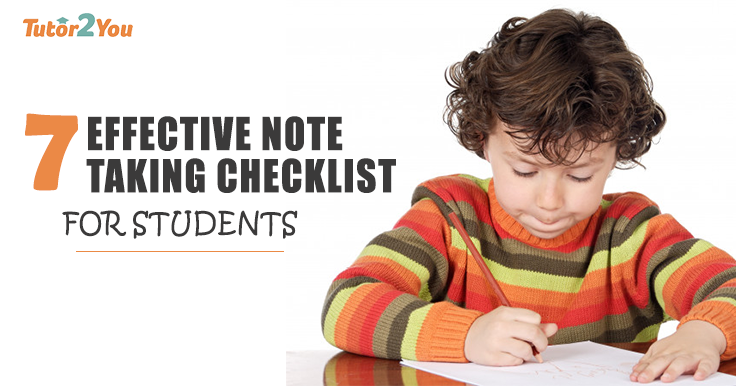
7 Effective Note Taking Checklist For Students
Note taking is potentially the number one most misunderstood shortcut to better results. There are two main reasons why note-taking is important. When you are reading or listening, taking notes helps you concentrate and notes help you to maintain a record of what you have understood. This is useful when revising in the future.
Good notes should be accurate, clear and concise.
They should show the organisation of the content and the relationship between ideas.
Period Review
It is important to make sure that as you’re going through the term, you are committing your knowledge to your long term memory. This is done through regularly activating the neural pathways to and between memories or in other words, repetition.Now this does not mean doing every single question in the book, however by periodically reviewing your work, you will actually save yourself in the long run. It is far easier to commit something to long-term memory than it is to learn it in the short-term, forget it, and have to relearn it again.
An example review schedule could look as follows:
- 1 day
- 3 days
- 7 days
- 21 days
- 35 days
Whilst the actual days may vary, it is important to review information 2-3 times in the first week. From there you can start to stretch out reviews to every 1-2 weeks. Mark these reviews in your term calendar.
Flash Cards
Whilst a review schedule is very powerful, using flash cards is a very simple and highly effective memory technique. You can make your own flashcards but cutting up an A4 sheet of paper into 5cm x 10cm cards. (You can also buy flashcards from a newsagent but these are often far too big, so try cutting them in half)Understanding how different facts, rules or formulae relate, starts with knowing the facts, rules or formulae themselves.
If you are trying to learn a new fact put a question relating to the fact on the front of the flash card and the answer on the reverse.
If you are trying to learn an equation or rule, put one side of the equation on each side of the card.
Doing it this way means that the flash cards can be used looking at either side first.
Sitting At The Front
Research has shown that students who sit towards the front of a classroom, achieve better results. Simply make sure you start doing it, then make it a habit.
Note Taking Checklist
- Prepare for note taking by reviewing the content before the week begins.
- Only write down the main points (don’t get bogged down in the detail).
- Write in shorthand, but in your own words (you need to be able to understand it later).
- Listen for keywords or phrases from your teacher (e.g. you need to know this).
- Listen for linking words, firstly, secondly, however, etc. these join ideas together and is important when trying to absorb information.
- Make sure to write down any examples the teacher gives.
- If you don’t understand ASK.
Let us help your child work on this effective note taking checklist for students.
If you would like help on effectively taking notes from our trained and certified tutors why not click here and enquire today.


